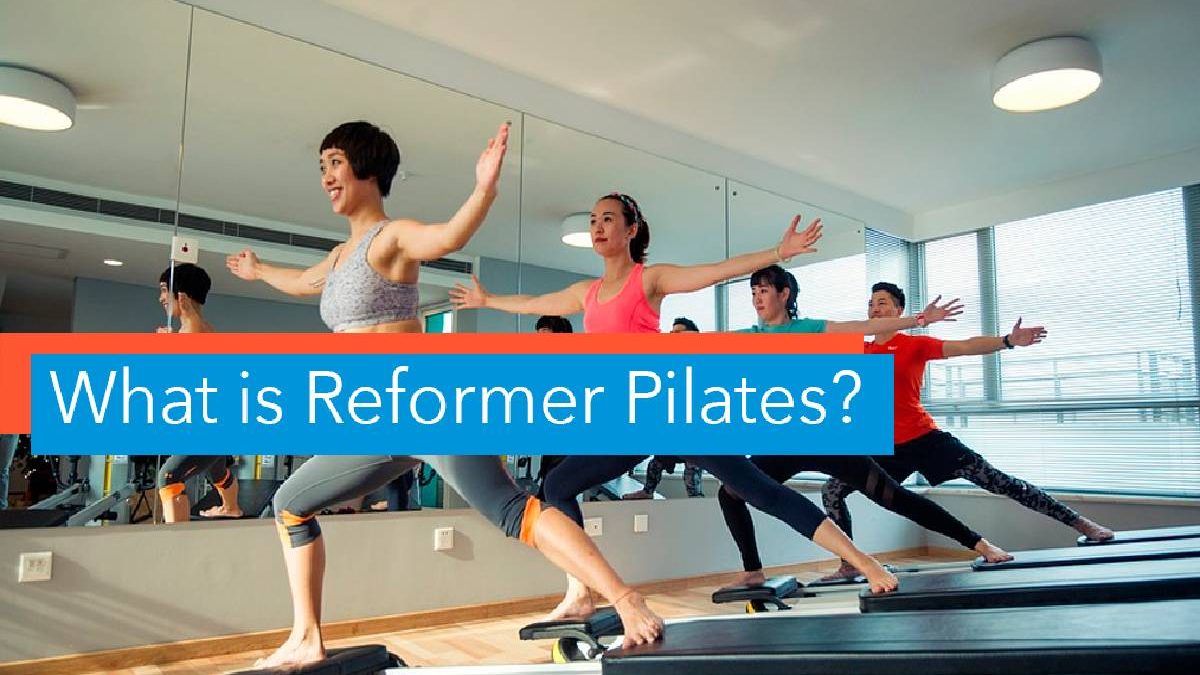Reformer Pilates is the practice of Pilates with the use of, reformer machine. Invented by Pilates founder Joseph Pilates, Pilates reformers provide practitioners with a wide range of exercises, precise muscle targeting, and a more dynamic workout overall. People from all walks of life — including the most famous movie stars — love stepping onto their reformer to reap the benefits of improved core strength, toned muscles, and amazing flexibility.
To the eyes of a newcomer, reformer Pilates equipment can look a little daunting. All those pulls, springs, and new positions could make a newbie feel like they should spend a few workouts on a Pilates mat first. The opposite is true. Reformer Pilates isn’t just for fitness experts or the Hollywood elite. Anyone can step onto a reformer machine to experience the incredible effectiveness it offers.
Table of Contents
The History of the Pilates Reformer
The reformer is the staple of the Pilates world. Although there are variations, traditional reformers are basically framed with a sliding carriage, complete with springs, pulleys, and ropes. Created in Joseph Pilates’ studio in the 1920s, the reformer was constructed so that its creator could deconstruct and better explain the movements of mat pilates. Beginners could use the machine to get a sense of the flow of Pilates and to strengthen their core muscles in order to do mat exercises more effectively.
As Pilates is rehabilitative in nature, it was first used to treat those in need of healing. In his New York studio, James Pilates treated professional dancers with aches and pains. Today, Pilates reformers are used to help increase flexibility and strength or bring it back to people with stiffness, chronic core-related pains, and old injuries.
Why Reformer Pilates?
As previously mentioned, reformer Pilates offers a wealth of benefits. With regular practice, practitioners experience improvements in:
- Flexibility
- Overall muscle strength
- Core muscles strength (back, abdomen, pelvic floor)
- Posture
- Hand-eye coordination
- Concentration
- Body awareness
- Emotional control
- Breathing & relaxation
Practitioners also commonly claim to have less tension in their shoulder and neck muscles. Similarly to Joseph Pilates’ first clients, many of today’s practitioners use Pilates to safely rehabilitate injuries in the spine, joints, and muscles.
At its core, Pilates is about improving one’s physical and emotional wellbeing. Anyone can benefit from a Pilates session. There are exercise variations for both new and advanced practitioners. Unlike other workouts, which aim to bulk muscles or raise your heart rate. Pilates aims to provide you with control — of both your breathing and your body.
Pilates is used as a tool for people from all walks of life. Celebrities like Lady Gaga and Kate Hudson swear by it. While Hudson uses Pilates to stay fit and limber, Gaga uses her reformer machine to work through aches and pains associated with fibromyalgia. Pop stars and A-list actresses aren’t the only people who love Pilates. Some of the world’s top pro athletes use it to recover from muscle soreness, build lactate tolerance, and improve balance and coordination.
Common Misconceptions About Reformer Pilate
People sometimes believe that reformer Pilates is a difficult practice to master — that’s because a quick Google image search brings up tons of images of super-fit practitioners doing advanced poses on what can only be described as a medieval-looking machine. Don’t worry; it’s not as difficult as you might think!
After your first session with a reformer, you’ll come to realize that Pilates is only as challenging as you want it to be. You do not have to be exceptionally flexible to do reformer Pilates, though you will find that your flexibility will improve with time. There are workouts that cater to more advanced users, but reformer Pilates isn’t meant to be overly complicated.
However, don’t let its resistance customizability fool you — reformer Pilates can also be extremely challenging. Just like the weight training machines at your local gym, reformers are meant to help you build strength. Developing core strength is an important tenet of Pilates; you’ll find that a single routine will activate all kinds of muscles throughout your body.
Reformer Pilates at Home
Although there are group and private reformer Pilates classes offered at Pilates studios. You should consider setting up your own studio at home. Having an instructor by your side during your first few workouts is a great way to get acquainted with proper technique. But studio memberships can become quite costly over time.
Buying your own reformer allows you to fit in a workout whenever you want in the comfort of your own home. A quality reformer is a considerable investment — good reformers are in the $2,500-$7,000 price range — but the fact that you’ll never need to buy another class pass again means you’ll make a quick ROI.
Curious about what all the buzz is about? Try it out! Head to a Pilates class near you, or find a few mat routines to follow online. Who knows? You might be well on your way to getting a reformer of your very own.

